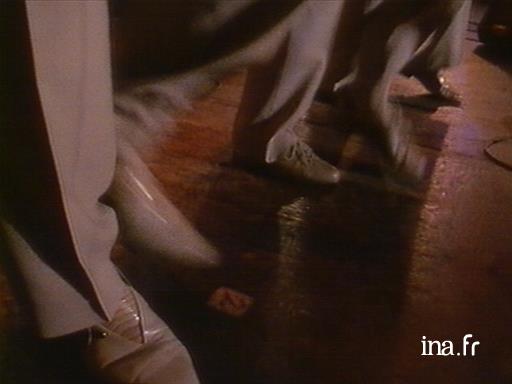Salsa, Willie Colón

Information
Bernard Lavilliers leads us through the discovery of Salsa in New York. Interview with musician Willie Colon on the origins of Salsa. He calls New York "The Mecca of tropical sound". Bernard Lavilliers, who is in a bar in a Puerto-Rican district, composes a salsa tune on the guitar. The report is illustrated with dances sequences performed in discos.
Context
Even though a large number of these rhythms are of Cuban origin, the emergence of Salsa can essentially be found in the artistic exchange that connected New York and Puerto Rico in the 1960s and 1970s. This musical style is indeed based on the coming together of Caribbean polyrhythms and North American Jazz in New York, specifically in neighborhoods of Spanish Harlem, where there was a Puerto Rican majority.
Earlier in the century, this mixing of music styles had already been at the origin of a wide variety of musical variants, including: Latin Jazz created at the beginning of the 1940s by the Cubans Machito and Mario Bauza; the Cubop born a few years later when the New York trumpeter Dizzie Gilespie met percussionist Chano Pozo Cuba; or even Mambo, which gained fame in the 1950s on the floors of the famous Palladium Ballroom, the Cuban Machito Orchestras and the Puerto Rican Tite Puente and Tito Rodriguez.
After the decline of the Mambo in the mid-1960s, a new generation of young musicians, mainly from Puerto Rico or of Puerto Rican descent and based in New York, would renovate Latin Sound, adding tones from modern North American urban music: Rock, Pop, Funk, Rhythm 'n' Blues. They also brought us, first of all, the Boogaloo, very quickly followed by Salsa. The creation of this music was also largely due to the initiatives of producers and dance hall owners from Italian and Jewish communities, including Jerry Massucci, Ralph Mercado and «Issy» Sanabria,.reflecting a further expansion of ethno-music mixes, which were historically one of the main driving forces behind the vitality and constant renewal of Caribbean music .
Some of the names of the musicians who invented Salsa music include: Cheo Feliciano, Willy Colon, Johnny Colon, Ray Barretto, Bobby Valentin, Eddie Palmieri, and a little later Willie Rosario. And, what a happy coincidence! You see them all listed (well almost) in the credits of the excellent documentary produced by Jean-Pierre Jenssen in 1986 "Salsa / The children of rock music", with the participation of Bernard Lavilliers as a well-advised guest. In its well-paced montage, the film alternates really excellent interviews (such as Eddie Palmieri speaking passionately about his creative process) and long passages of music performed by the best orchestras of the time.
The film, partly shot in Puerto Rico and partly in New York, also makes us feel the differences in climate between the tropical languor of Borriquen and the dullness of the slums in the huge Big Apple, crammed full of people of Puerto Rican descent, like in Spanish Harlem and the Bronx. An effective way to make us feel, in just a few words, the sometimes painful dual identity of these «Nuyorican» populations where the soul of Salsa has fixed its roots; music which is associated both with Caribbean exuberance and the stress of large modern cities.
The film also presents dance scenes where we can already see people practising what a few years later came to be known as "New York Style Salsa": a dance that originated from Mambo, but which incorporated elements of the Hustle (or «Disco» if you prefer), as well as rock 'n' Roll and Broadway dances. A style that, contrary to what people sometimes think, took a long time to compete with the Hustle, only starting to be widely danced to "Salsa" music more than 15 years after its first appearance, thanks to the hard work of the dancer Eddie Torres and Tito Puente.
We can perhaps express some reservations with respect to the long passages showing Lavilliers strolling along in his tank-top through the streets of the Bronx or recording his own songs, which despite their many qualities, were not the best examples of New York Salsa. Moreover, the scene in my opinion is a little economical in terms of the explanation it provides on the development of the different forms of salsa. At the time when the film was shot in 1986, Salsa romantica, which was more Puerto Rican and commercialized, was actually trying to supplant New York's original Salsa brava, which was more strident and provocative. But almost nothing is said about the differences between these styles, despite the fact that the first part of the film plunges us very vividly into the then very active musical world of Puerto Rico, with its nights clubs, and its districts entirely devoted to performing and playing salsa, such as Calle 15 and radios like Z93.
Despite these few flaws, there is still a wealth of information to be discovered in this excellent documentary, produced by ardent lovers and connoisseurs of Salsa; it also provides an invaluable point of reference to any musicologist/ historian looking to know how the dance was being expressed in the mid-1980s!





